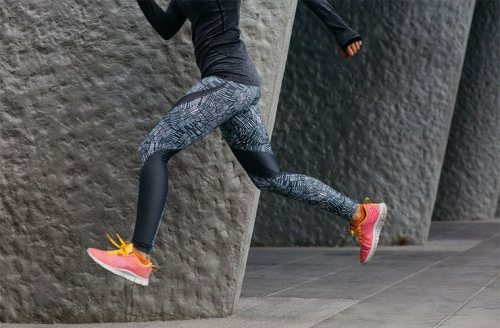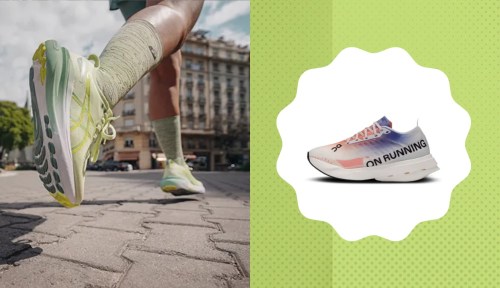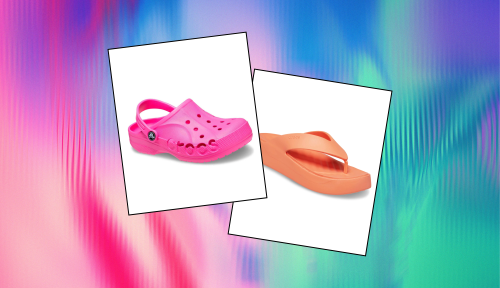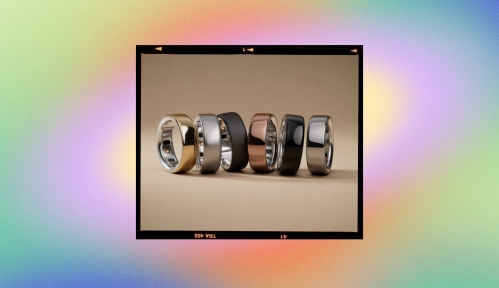Kanye West believes it will undoubtedly ruin the fashion business. A Harvard student used it to create a full palette of makeup. What is this mysterious thing set to disrupt the entire retail industry? A super-cool printer.
Though still in its infancy, 3D printing is the technology that’s changing the way products are created (including, yes, the potential for manufacturing Yeezy knock-offs). And the fitness market is taking note—after all, there’s the promise of producing pieces that fit better and offer up way better performance.
Over the past year, major fitness brands from Adidas to Brooks Running have announced the use of high-tech printing in the production of super-exclusive, limited-edition sneakers (AKA they haven’t quite hit everyday retailers yet). Whether it’s using the technology to add a seriously-cushioned midsole, perfectly align a shoe’s fit, or simply cut down on waste and amp up efficiency, these athletic giants are testing out all of the ways that a 3D print job can boost production. But they won’t come cheap—New Balance’s limited-edition 3D printed shoes went for $400.
So, are the benefits gained from a computer generated print job worth it? To find out, I got a pair of personalized 3D printed insoles, laced up my sneakers, and hit the pavement in search of answers.
Here’s what happened when I tried out the 3D printing technology in my own shoes.
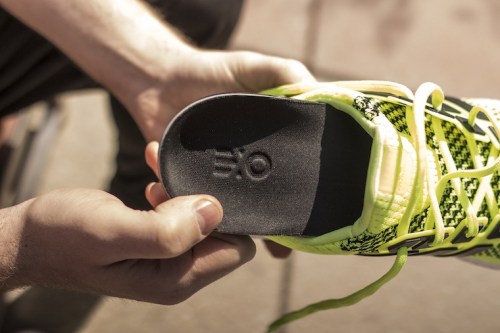
The high-tech basics
To get the lowdown on 3D printing—especially when it comes to sneakers—I met with Kegan Schouwenburg, CEO and co-founder of Sols, which is using the technology to create ultra-personalized orthotics that they claim will help ease your aches and pains—all for $99 a pair.
“If you look at the stats, 80 percent of people complain that their feet hurt at the end of the day,” explains Schouwenburg. “That’s not normal—your shoes shouldn’t be hurting your feet, back, or legs. But orthotics have such an uncool image, no one wants to wear them.”
“80 percent of people complain that their feet hurt at the end of the day. That’s not normal—your shoes shouldn’t be hurting your feet, back, or legs”
As someone who has worn orthotics throughout her entire life, Schouwenburg knows they work—her issue was translating the function of them into a stylish and discreet basic. Enter the ExoSols custom 3D printed orthotic system, which creates completely personalized insoles that can be slipped into any shoe to give what she says is more comfort and a better fit. Even cooler? They’re completely computer-generated (thanks to a foot-measuring app.)
The other upside is that 3D printing allows for a more environmentally friendly and cost-efficient experience compared to normal footwear production. “The future of 3D printing will allow you to plan out what kind shoes you want and how you want them to feel,” she says. “Your computer will already hold your profile, so they’ll fit perfectly—every single time.”
While the technology to begin mass-producing shoes isn’t quite there yet, this new way of purchasing footwear could cut down on manufacturing costs and shake up the traditional stock system—eventually, inventory could be solely based on demand and, with all shoes created quickly, efficiently, and within days. “This could disrupt the footwear industry,” suggests Schouwenburg.
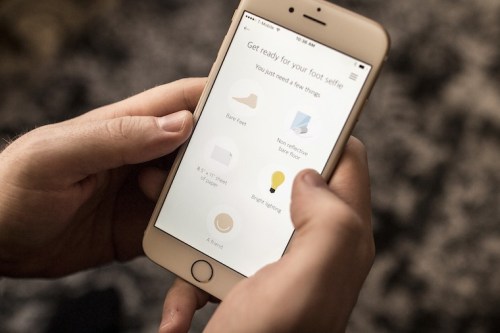
The 3D challenge: what happened?
Since this process is still in its early stages, many of the bigger brands aren’t selling their 3D shoes to the masses—or if they are, they’re going quickly—so I put the ExoSols orthotics to the test. What better way to try out the experience than with an insole that I can use with every pair of sneakers I own?
After purchasing my pair of slip-in orthotics, I was directed to the app to complete my order. The process involves answering a few questions about size and fit preference, including describing when I feel any pain or discomfort—after walking, running, standing, etc.—and taking six pictures of my entire foot. (That last step required the help of my roommate and several sheets of white paper.) It’s definitely a lengthy process, but once I finished, my fit profile was saved—kind of like how Seamless knows that I like steamed dumplings with my Thai food delivery order.
Although the website claims the insoles ship in about six days, my order took more like six weeks—a minor, slightly frustrating setback. So much for instant gratification. When they finally did arrive, I was more than underwhelmed. In plain black, they seemed fairly unimpressive and felt very stiff in my hands. How much comfort could they actually provide?
The insoles were so aligned with my feet that I felt weightless—and also weirdly energized, like I could seriously run for hours
Despite my reservations, I was ready to slip them into a pair of kicks and give them a run around the block (literally). First up: my Adidas running shoes for a quick outdoor workout. And, whoa, could I feel the difference.
It was like I was running on clouds, with the sort of extreme cushioning you might find with maximalist sneakers. The insoles were so aligned with my feet that I felt weightless—and also weirdly energized, like I could seriously run for hours. (Don’t worry, I did eventually go back home.) My knees—which tend to be my trouble spot—didn’t get as ache-y as fast. Although I ran four miles that afternoon, my body felt like it had just finished up only two miles.
Next up, I tried them in my trusty slip-on triple-decker Keds to see how they’d handle shoes that aren’t quite as performance-driven. At first the ExoSols seemed a little stiff in the slim pair of shoes (after all, it added close to a half-inch to underneath my foot). It wasn’t uncomfortable, just different. But there was an upside: My feet instantly felt more supported.
Ultimately I wore the orthotics in my shoes all day, every day throughout the week and felt zero discomfort. While these may still be a novelty purchase for many—especially as brands unveil them with as much hype as a new Apple product—3D printed shoes could definitely be a sign of the (pain-free, personalized, more sustainable) future.
Also making waves in the fitness tech world: wireless headphones and this treadmill-replacing piece of equipment.
Sign Up for Our Daily Newsletter
Get all the latest in wellness, trends, food, fitness, beauty, and more delivered right to your inbox.
Got it, you've been added to our email list.
